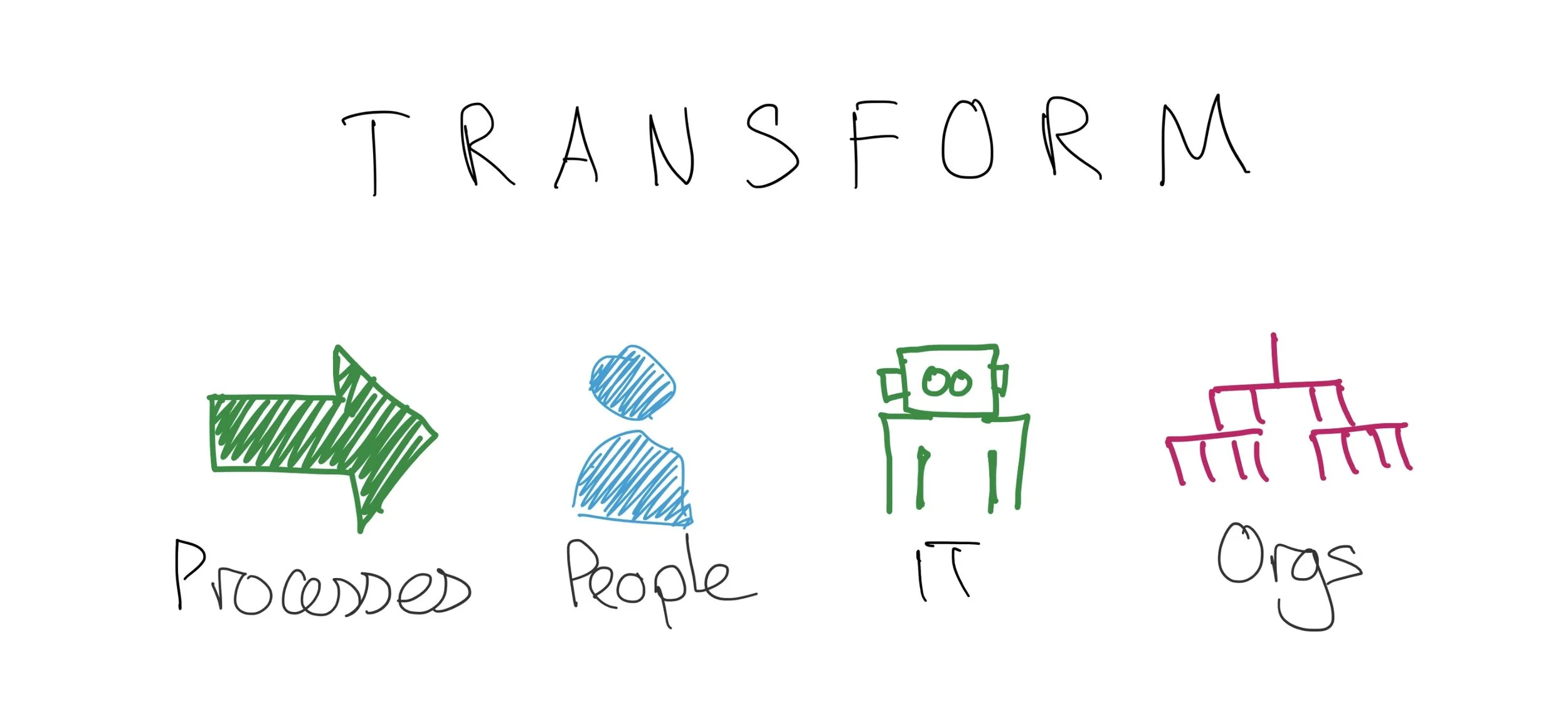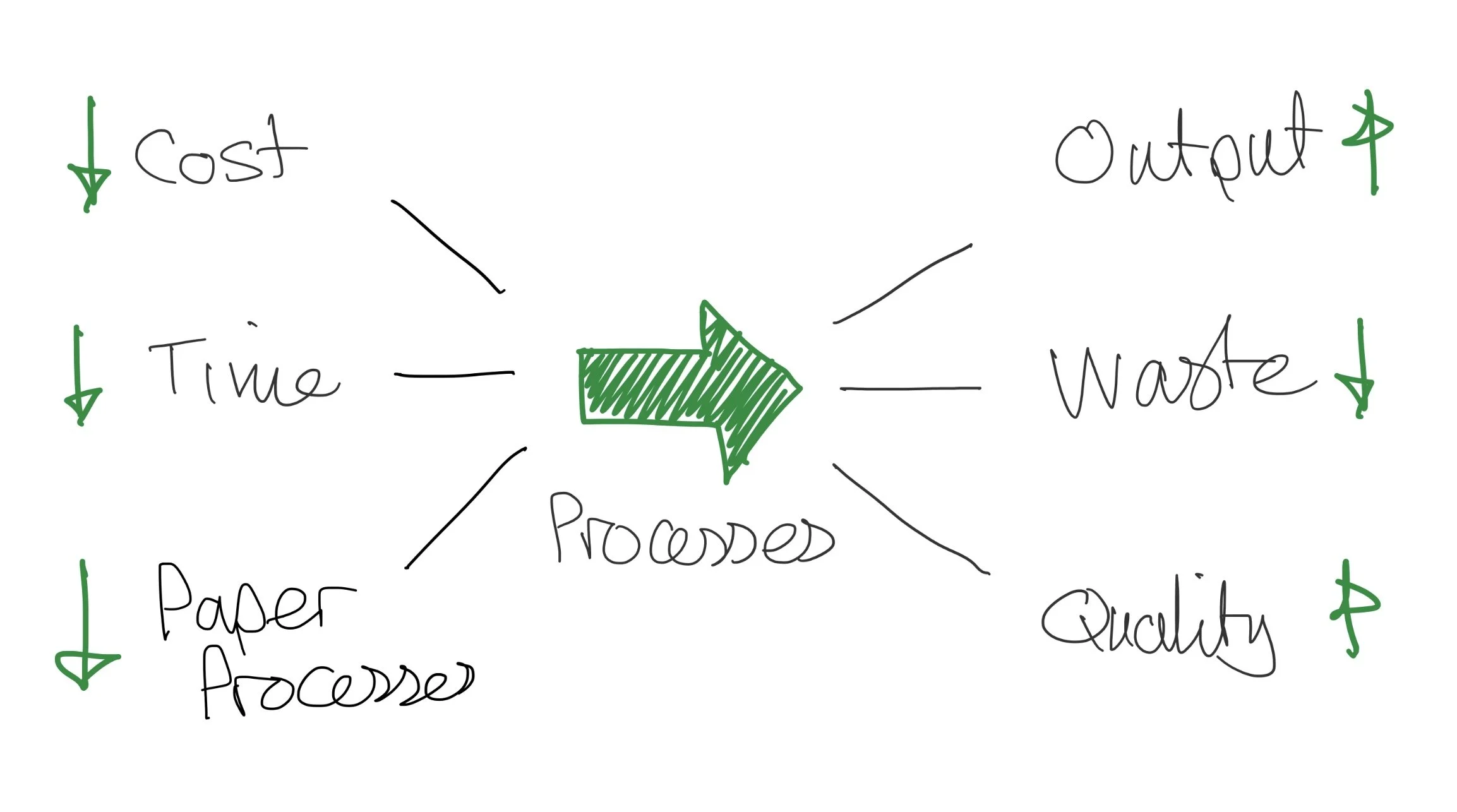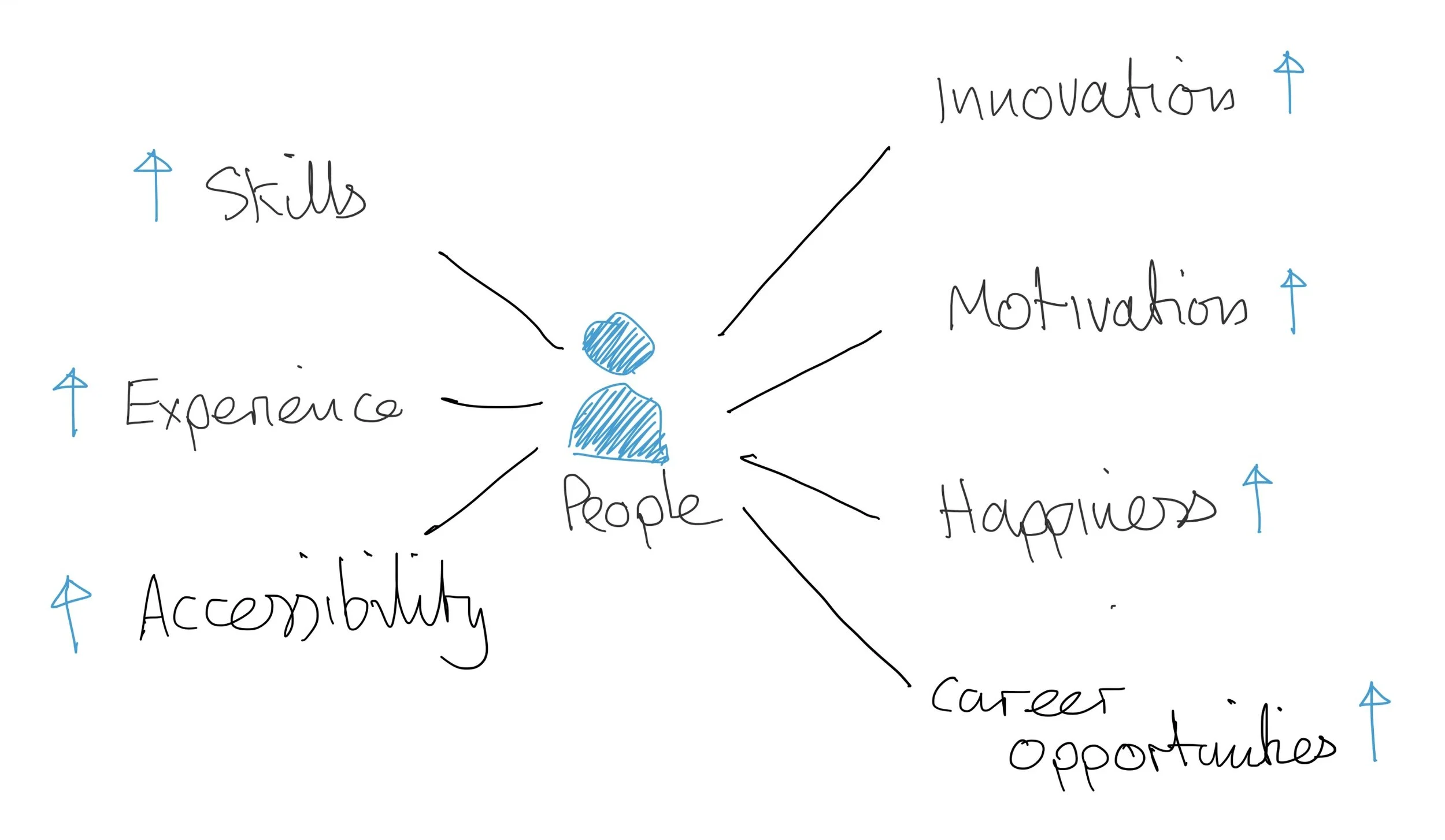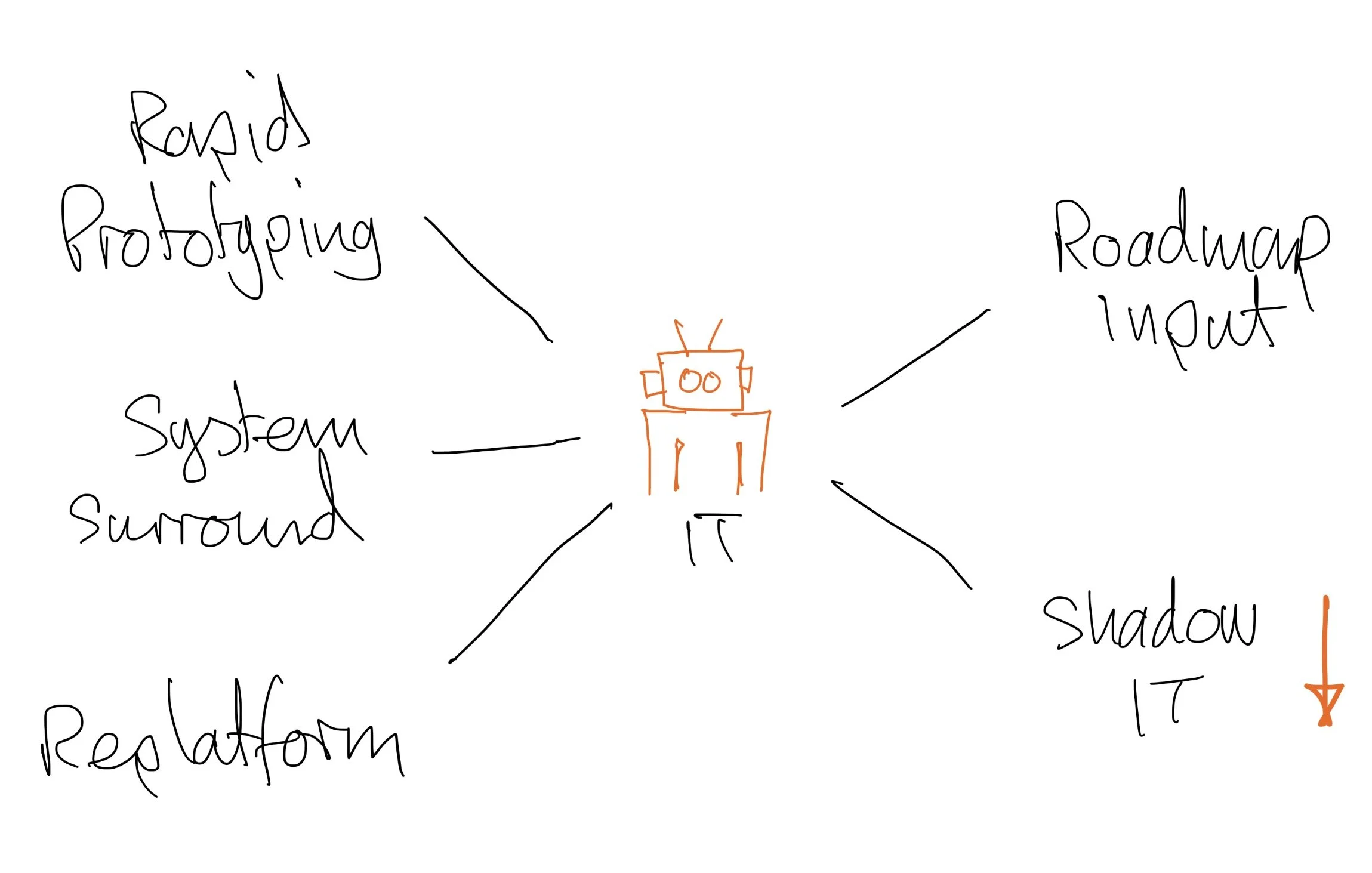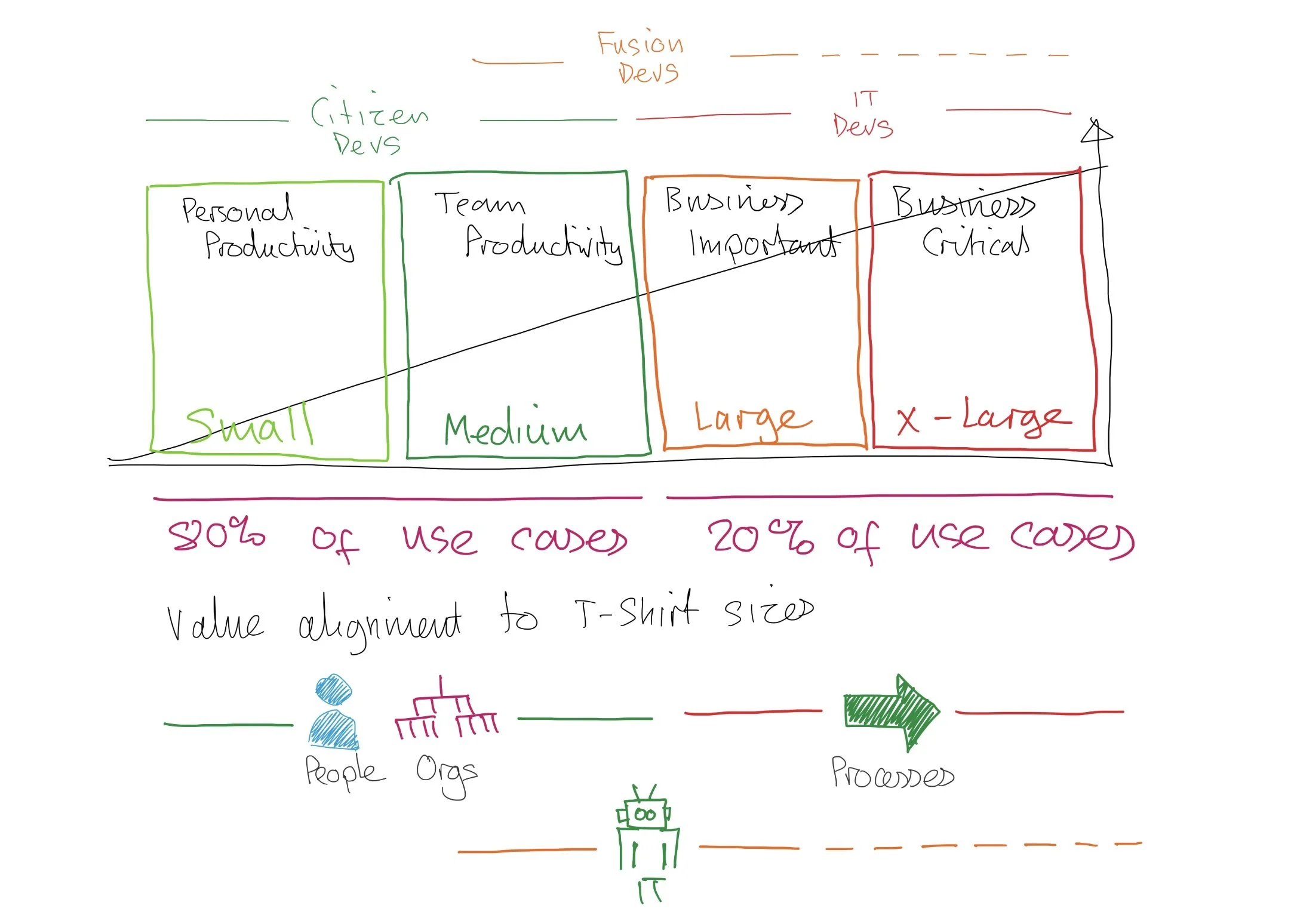PP Value Hypothesis
Welcome everyone! This post is part of my wider series on how to implement low-code not just from a technology and process perspective, but also for a people enablement and adoption perspective to truly maximise value from the platform - This post gives an overview of the structured approach I’ve defined and how I’m breaking down my blog posts
Holistic Low-Code Enablement - Blog structure and navigation — EmPOWER Your World
The first module of my view of Power Platform Enablement is going to be ‘Value’ - With each of these modules I’m going to aim not to write a War and Peace size post about them even though there is a lot to share and discuss! Instead this first round of posts will address each of them at a high level and then in follow up posts I’ll drop down to talk about different aspects in more detail, or based on questions that people might ask.
Image : Reminder of my view of Power Platform Enablement
So on to the topic of value! When we tend to talk about ‘Value’ we usually hear conversations about how much time the thing saves… How much lower costs are… How output has been increased… How quality has been improved… These are all types of value and they’re all valid an important. If we’re not seeing these types of value from our investment in the Power Platform then how can we justify it’s cost? We tend to talk about the processes because they’re easy. They’re tangible. We can touch and feel and understand how to measure them. But there’s more to consider here… MUCH more! And we’ll get into that but first I’m going to set the scene a little.
If we change the question a little and ask different people what they value about the Power Platform we get some different insights. Some different types of value to consider. For example we ask me (which would be a bit weird as I’d be asking myself the question…) one of the things you’d hear me talk about is that I LOVE the way that the Power Platform transforms lives! There are some AMAZING real world stories out there of people doing just that. People who have no formal development background who find and connect with the tools and learn, solve problems, transform themselves, and change the direction of their careers! It’s PHENOMENAL! If you take a look at the Microsoft Customer Stories site you’ll read loads of these transformational stories and many of them about people who, through my own transformation story, I’m proud to be connected with and call friends 😊
So you see that ‘Value’ can be described in different ways by different people. Let’s come back to some of those different ways and bring it to life for you a bit more shortly.
If we think more broadly about what ‘Value’ means in terms of a Power Platform implementation at an organisation we use it as a mechanism to Digitally transform. If we widen our perspective of value we can consciously use it to transform a wider scope of ‘things’ and deliver more value!
Image : Different types of Transformation we can unlock with the Power Platform
If we think more broadly from the outset (or even from further along the journey if we’ve not thought about previously) we can ensure that when implementing the Power Platform we’re thinking about all these different types of values and engaging the right sponsors and stakeholders, with the right focus and language, in a way that matters most to them and their objectives. In short - ‘Value is in the eye of beholder’!
Image : Value is in the eye of the bee-holder
Value can mean different things to different people, from people developing solutions to make their lives easier, through the leader of a function, or a person passionate about a specific area, right up to the C-Suite - HR, Operations, Finance… etc.
I have a hypothesis on how that value comes to life and is presented to the world, those different worlds! For that value to occur we need to
Build solutions and solve problems
For that to happen we need ‘Makers’ - People who are experimenting and learning the platform
To make those makers we need people to know what Power Platform is, what it can do, who can do it, how they can do it etc. - We can call that group of people a ‘Community’ in it’s widest sense.
We can then view enabling value as a bit of a numbers game - The more people who are aware of the Power Platform and inspired by it, the more people are likely to become makers. The more makers we have, the more solutions we’re likely to have. Through these elements the more ‘Value’ we’re likely to realise.
I said we’d go back to the ‘types of value’ and true to my word we are! 😁
Let’s think about those different types of transformation we can consciously aim to deliver with our Power Platform implementation. We’ve spoken a bit about the value associated with Transforming Processes but let’s start with that one
Image - Types of value associated with Process Transformation
We previously spoke about Cost, Time, Output, Waste, Quality… but if we think more broadly there are also Environment, Social, Governance (ESG) opportunities too! If we’re digitising previously paper based processes then we’re having an environmental impact. If we’re measuring it - how many sheets of paper each time? How often is the process used per day / week? How many is that in a year? Is the paper currently stored or disposed of? Is there a financial cost to that? Or an energy cost for disposal?
Let’s look at types of Value through a ‘People’ lens - These could be the users of our solutions, or could be our Makers.
Our Makers are learning new skills. They are probably owning their own development and using a growth mindset to solve problems using the ever increasing selection of resources out there! They’re probably feeling pretty empowered as a result which increases their motivation to learn more and to innovate and experiment to solve more business problems, remove or automate some of the boring pieces of their roles, and build their experience even further. With this experience and all these successes they’re having come additional career opportunities to learn more, do more, have more of an impact. All these elements make for a happier person at work.
As well as their processes getting digitised and improved, our users also get some benefits too. If we’re guiding our makers with the right information to help them learn not just the technical elements of building solutions, but also how to solve the right problems, think about the User Experience and what our user needs actually are and make sure they’re gaining knowledge on accessibility then we can make our solutions great to use for the broadest audience possible and show that we care about their experience!
Image : Types of Organisational Value of implementing the Power Platform
We can also look at Value through the wider organisation’s lens too.
Implementing the Power Platform with a conscious and joined up vision can change the behaviours and mindset of leaders to help them see the value these tools can unlock in their teams, in how they work across the organisation, how they accelerate problem solving.
By unlocking, encouraging, and unblocking challenges to, this potential in their teams, and actively celebrating and promoting this different way or thinking and working it encourages others. It promotes competition across their peers. It slowly changes the culture of how things are done there!
Because these are a set of capabilities that can be used by anyone across the organisation to a greater or lesser extent there are no boundaries to who could be a ‘Maker’ - Any level of the organisation, any role, any gender, and physicality… anyone! We can create a truly diverse population of Citizen Developers / Business Technologists. Depending how their capabilities and interest grows these could be feeds into our traditional data or developer population too!
All these things make our workplace a more forward looking, more interesting, more empowering, nicer place to work and, if we do it well, potentially helps us retain talent that might otherwise look for challenges elsewhere, or if we promote it externally as one of our strengths or one of the skill sets we’re looking for in our job descriptions, attract talent that may not previously have considered us!
Another lens we can have on value is value to IT - How might implementing the Power Platform be valued there?
The Power Platform can provide all sorts of benefits if we understand it to be a strategic capability
It can be a way to augment some of our core business systems to give enhanced capabilities
It can be the glue that holds processes together between numerous business systems to make the End to End process smoother, more connected, more efficient, and the user experience better!
It can be a way to mitigate the costs or risks of some of our legacy systems which may be older technology, or have higher licensing or support costs.
It can also be a way for us to reduce business risk by shining a light on the shadows of shadow IT. We can show people the value in using these tools which we have greater visibility of what’s going on, who’s doing what, how they’re doing it etc.
Image - How different categories of value align to different complexity of solution
We can think about how these different types of values might align to our different t-shirt sizes of solution.
At a solution level, traditional process value of cost, waste, output etc. is primarily going to be seen in the use cases which are on more complex processes, perhaps using core business systems, used by more people.
Whereas for simpler use cases shared with fewer people, although across an organisation those Process value types mount up to potentially huge numbers, at an individual use case level those will primarily help build capability iteratively over time by solving more and more challenging problems, will help connect people, will help change people’s behaviours and how they think about trouble solving, and will help change culture.
I hope I’ve broadened your perspective and you can see that there is more to Power Platform Value than £’s, time, waste, output! Recognising this gives us different ways we can stimulate adoption of the platform by interacting with different groups of people, with different perspectives of value, in more targeted ways.


